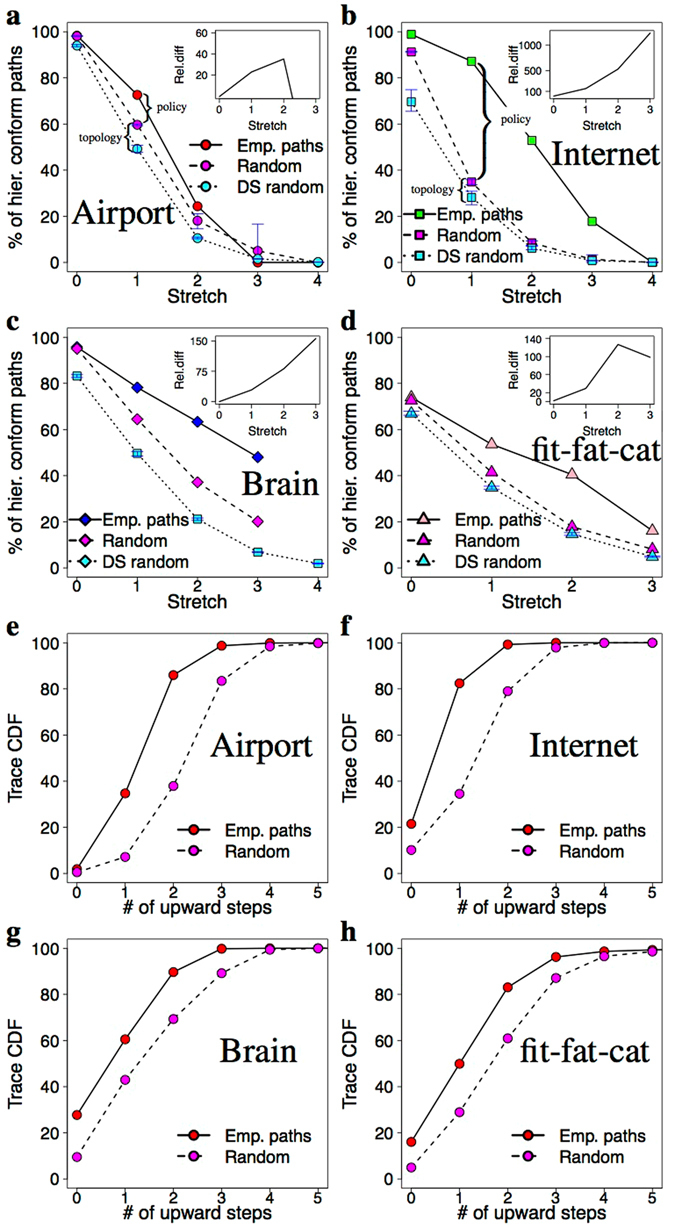Figure 3.

Identified routing policies confirmed by our measurement data. Panels (a–d) show the hierarchical conformity of the empirically-determined paths against stretch. The inset of the plots shows the relative difference between the number of CH paths in the empirical and the random paths. In the case of small networks there are 15–85% more CH paths in the empirical traces but in the case of the large AS level Internet this goes up to 100–500%. The cyan colored data in the plots show the number of CH paths in a randomized version of our networks generated with the degree sequence (DS) algorithm which produces exactly the same degrees for the nodes but the edges are completely randomized. The plots confirm that the topological peculiarities of real networks increase the number of CH paths between endpoints with respect to the DS networks (see the explanation brackets between the cyan and magenta colored dots of panel (a,b)). However, we argue that the effect of the CH policy is at least that important or even more fundamental (e.g. in case of the Internet). Panels (e–h) show the cumulative distribution of upstream steps in the traces of our datasets. The empirical paths tend to avoid stepping towards the core, which is reflected by the much lower number of upstream steps (in comparison with the randomly selected CH paths of the same length) before entering the downstream phase.
